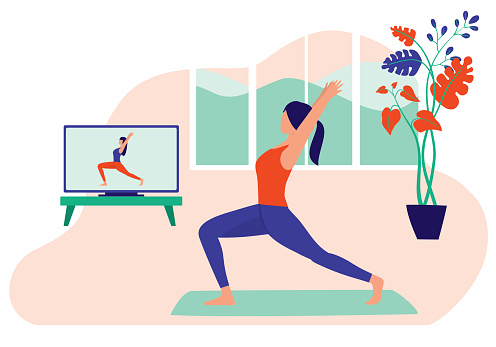Since the pandemic, people have been more inclined towards maintaining and upkeep their health. As one can’t always rely on medications, the burden of keeping them fit and avoiding medicinal intake largely falls on diet regimes and fitness routines.
With increased interest in fitness, fitness brands have witnessed a significant surge in consumer demand. To get a better hold of this opportunity, they started using influencer marketing as one of their preferred modes of marketing. Not only has influencer marketing significantly assisted in leveraging the opportunity, but it has also helped the brands get a higher reach. We have compiled a list of benefits that influencer marketing ensures for fitness brands.
How to Choose the Right Sports and Fitness Influencers
Choosing the right influencers in sports and fitness is crucial for the success of an influencer marketing campaign. Here are some tips for selecting the right influencers in this niche:
- Define your target audience: Before choosing influencers, it’s important to define your target audience. This will help you identify influencers who have a following that aligns with your brand’s target demographic.
- Look for relevant content: Look for influencers who regularly post content related to sports and fitness. Check their profiles to see if they post content that aligns with your brand’s values and messaging.
- Analyze engagement rates: Analyze the influencer’s engagement rates, such as likes, comments, shares, and views, to ensure that their audience is engaged and active.
- Check for authenticity: Check if the influencer’s content appears authentic and genuine. Look for influencers who promote products they actually use and believe in, rather than just for the sake of sponsorship.
- Consider their reach: Consider the influencer’s reach and how far their content can go. Look for influencers who have a large following on social media platforms relevant to your brand, such as Instagram or TikTok.
- Evaluate their credibility: Evaluate the influencer’s credibility and reputation within the sports and fitness community. Look for influencers who are respected and trusted by their followers.
- Collaborate on a mutual vision: Finally, consider influencers who are willing to collaborate with your brand on a mutual vision. Look for influencers who are open to discussing ideas and willing to work together to create compelling content.
Overall, by following these tips, you can choose the right influencers in sports and fitness to help you reach your target audience and achieve your marketing goals.
How To Create A Sports Influencer Marketing Campaign That Works
Planning an effective sports influencer marketing campaign requires a well thought-out strategy. Here are some key steps to follow:
- Define your campaign objectives: Define your goals and objectives for the campaign. Are you looking to increase brand awareness, drive sales, or build credibility? Clearly defining your objectives will help you create a more targeted and effective campaign.
- Identify your target audience: Identify your target audience and their interests to ensure that you select the right influencers to work with. Consider the age, gender, location, and other demographics that align with your brand’s target audience.
- Choose the right influencers: Choose the right influencers to work with by considering their relevance, reach, engagement rates, and credibility. Look for influencers who have a large following and regularly post high-quality content that aligns with your brand’s values.
- Develop a campaign strategy: Develop a strategy for the campaign, including the type of content you want the influencers to create, the platforms you want to use, and the messaging and tone that you want to convey. Ensure that the strategy aligns with your campaign objectives and resonates with your target audience.
- Set a budget: Set a budget for the campaign, including the cost of working with the influencers, content creation, and other associated costs. Ensure that your budget aligns with your campaign objectives and allows for a reasonable return on investment.
- Monitor and measure results: Monitor and measure the results of the campaign to determine its success. Track metrics such as engagement rates, reach, and conversion rates to evaluate the effectiveness of the campaign and make adjustments as necessary.
- Cultivate long-term relationships: Finally, consider cultivating long-term relationships with the influencers to build a more sustainable and effective influencer marketing strategy. Work with them to create ongoing content and campaigns that continue to engage your target audience and achieve your marketing goals.
By following these steps, you can plan an effective sports influencer marketing campaign that reaches your target audience, builds credibility, and drives sales and conversions.
Influencer Marketing for Fitness Brands
1. Reach your Target Audience
Using the right influencers for your brand and product marketing campaigns can yield great results. There are an array of influencers in the fitness category itself. For instance, some influencers provide fitness tips; some assist their audience with diet tips, while others inspire their workout routines.
Depending on a brand’s domain, they can correlate it with the influencer’s niche making a perfect collaboration further reaching out to the right audience.

2. Choosing the right influencers
Fitness is quite a sensitive topic, and many people don’t listen to other people when it comes to it. Making changes in our diet, bodies, and regimes based on someone else’s opinion is always a matter of hesitancy.
However, people make this change when they hear it from a professional, who knows what they are saying—listening to an influencer talk about body positivity while adhering to the societal norms themselves won’t influencer the audience. So brands might want to collaborate with influencers who practice what they preach.
3. Similar Goals
If a brand is centred around body positivity and fitness, they are more likely to reach their audience when collaborating with an influencer who shares a similar goal.
Such collaborations bring the best out of the brands and influencers and add to their unique essence. Similarly, a brand centred around muscle gains is more likely to have a successful campaign when they collaborate with influencers involved in bodybuilding.
4. Leverage the circumstances
While the world may be corrupted with sickness and health issues, it is one of the most crucial times for the fitness industry. Being able to leverage this opportunity will help brands grow even more. Nowadays, it’s all about accessibility, home, and personalised workouts, which people prefer and fitness influencers deliver.

Collaborations with influencers are easy, beneficial and straightforward, especially with Wobb. We get brands the top influencers profile with their campaign goals as our priority. With Wobb, brands can make the most of their campaigns without worrying about the entire process.
Examples of Influencer Marketing in Sports and Fitness
Here are a few examples of successful influencer marketing campaigns in the sports and fitness industry:
- Nike: Nike has worked with a number of sports and fitness influencers, including basketball player LeBron James and soccer player Cristiano Ronaldo, to promote its products and campaigns. For example, the brand collaborated with James to launch the LeBron 16 shoe and with Ronaldo to promote the Mercurial football boot.
- Adidas: Adidas has also leveraged influencer marketing in the sports and fitness industry, working with influencers such as fitness blogger Kayla Itsines and soccer player Lionel Messi. The brand collaborated with Itsines to promote its women’s training gear and with Messi to launch a line of soccer cleats.
- Gatorade: Gatorade has worked with fitness influencers such as Kelsey Wells and Hannah Bower to promote its sports drinks and products. The brand collaborated with Wells to launch a 12-week fitness challenge and with Bower to promote its new Bolt24 sports drink.
- Gymshark: Gymshark, a fitness apparel brand, has used influencer marketing to build its brand and reach a wider audience. The brand has collaborated with fitness influencers such as Whitney Simmons and Nikki Blackketter to promote its products and build a community of fitness enthusiasts.
- Reebok: Reebok has worked with fitness influencers such as CrossFit athlete Annie Thorisdottir and fitness coach Emily Skye to promote its products and campaigns. For example, the brand collaborated with Thorisdottir to launch a line of CrossFit gear and with Skye to promote its new Nano training shoe.
Overall, these examples show how sports and fitness brands have successfully leveraged influencer marketing to reach their target audiences, build credibility, and drive sales and conversions.





